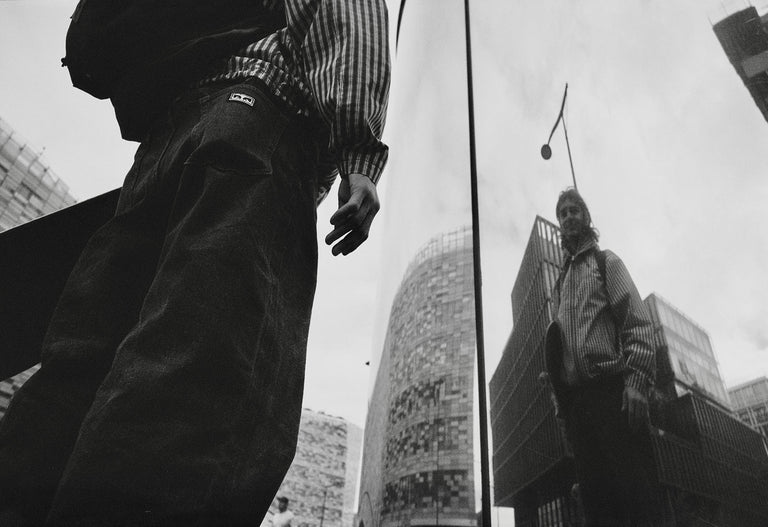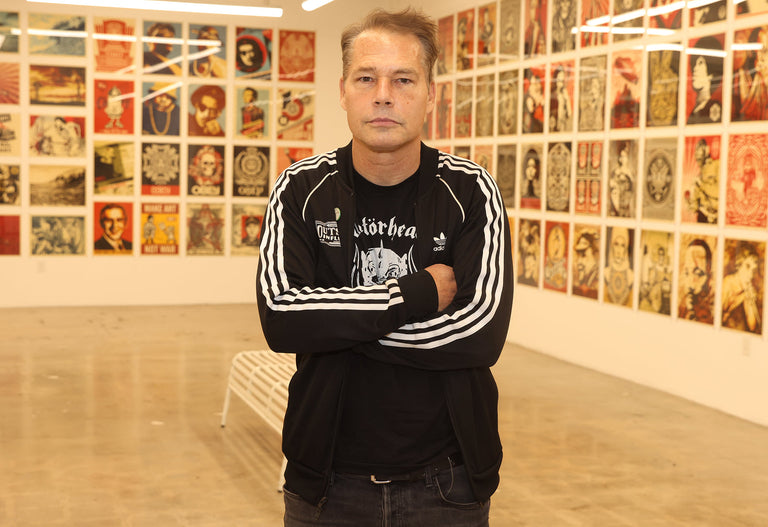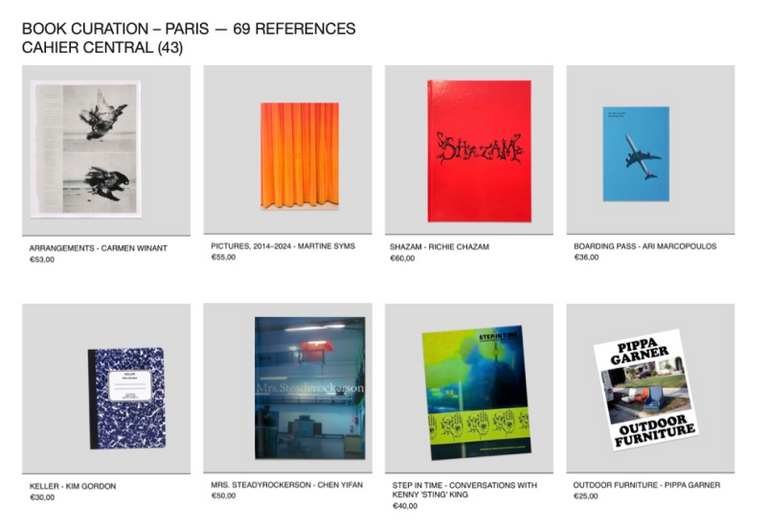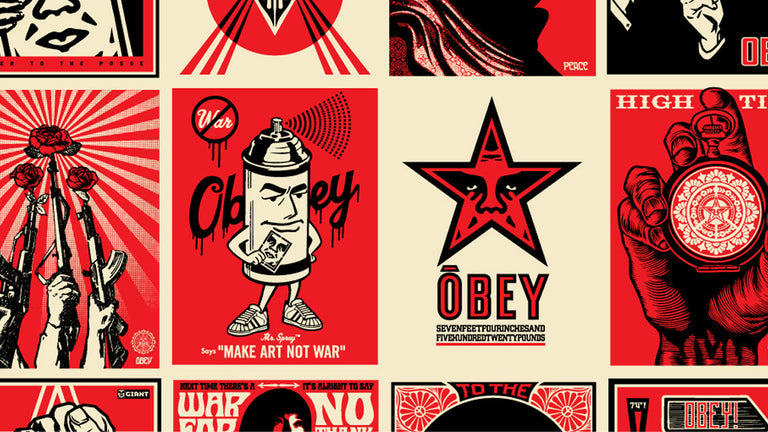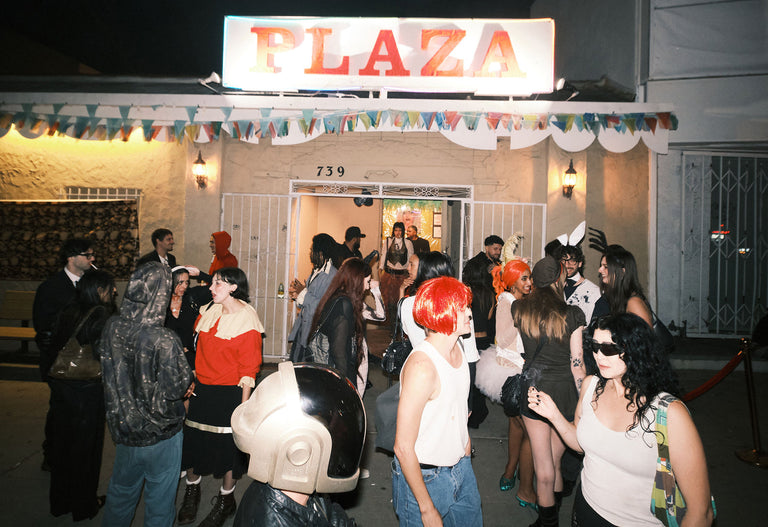Shepard Fairey Details How to Start an Art Collection – via Highsnobiety
There are very few of us who will ever be in a position to purchase a work of art like Pablo Picasso’s Les Femmes d’Alger (Version ‘‘O”) which recently sold at auction at Christie’s to an anonymous bidder for $179.4 million USD – making it the most expensive piece of art ever sold at auction. For most, art isn’t so much a good investment as it is something we want to live with for years to come. Shepard Fairey has seen his own personal art collection evolve from being forced to be budget conscious, to having the good fortune of being able to trade works with some of the contemporary, American masters. As both an artist and a collector, Fairey is uniquely suited to help those who want to jump into the often hard-to-navigate world of art collecting. Ahead of his upcoming show at Library Street Collective, we sat down with Fairey to get his thoughts on jumpstarting your own art collection.
What would be the first tip that you would offer to someone who was looking to start an art collection?
It’s really important to collect stuff that you like. Don’t think about it like a stockbroker. Don’t think about it like it’s an investment that’s going to give you a certain yield because a lot of art is very subjective and the way that the art world decides whether it’s going to accrue value or whether the art consuming public decides whether it’s going to accrue value is not an easy science.
I always say to be people, “look, if it’s within your budget and you love it, and you’re going to enjoy living with it and having it on your wall – and the amount of money you parted with to get to live with it is something you’re very happy with – that’s number one.” But then, doing your homework to know if something makes sense in terms of your values – the kind of artists you want to support and [what] that artist’s history is – not only in how they developed and where they’re coming from [but also] their trajectory from a sales standpoint. If you’re the kind of person who has the time to study up on an artist I’d say that’s good, but “number one” is something that’s not going to break the bank for you.
There are some people that I know who think about art collecting like “flippers.” It’s like, “okay, I’m going to buy this, hopefully it’s going to gain value, and then I’m going to sell it on the secondary market or eBay it.” I don’t think that’s the way to go. There are a lot of artists that make things that are embellished prints or things that combine painting and printing that are less expensive and I think that a lot of those works are really strong works, but less expensive than buying a one-of-one.
I don’t think any collector should ever be self-conscious if they like the work [and their budget leads them into] collecting a print or variable edition over a painting if collecting prints or variable works is going to allow them to have a broader range of things in their collection that they can afford. For years and years I primarily collected prints from artists because I could never afford an original from a lot of the people I looked up to. Now, my collection has expanded because I’ve done far better than I ever expected to do as an artist and clothing entrepreneur. There are a lot of great artists out there who make great prints.
Do you think having a limited budget can actually be an advantage when you’re starting off?
I think if it makes you do your homework, that’s great. I’ve had some really rich people come to me – and I don’t want to name names because I don’t want to diss anybody – but during the street art bubble, there were a lot of people with a lot of money and less time [who] came to me and said, “somebody told me that I should get this.” [And] I told them that the person wasn’t a significant person, they were a newcomer, their work wasn’t that strong, and they weren’t culturally relevant. People with less money rarely make those mistakes about what they’re going to collect because they will do a little more research.
In some ways, it can be an advantage. A lot of times when an artist is new, you can develop a relationship with them – or maybe not necessarily a newartist but someone who doesn’t have as established a market [for their work]. There are some people that I love like Ravi Zupa from Denver. He’s in his mid 30’s and his work is completely mature and amazing. It’s super well done technically and very smart, but his work is still very affordable because he’s not in LA or New York or San Francisco. When I started collecting his works, he was so loyal about letting me know what he’s doing. So I think if you don’t have that much money but support someone who doesn’t have that much money, you will form a relationship with them that as their work becomes better known, they’re going to give you a lot of first opportunities to collect the works because of a sense of friendship and loyalty for the support that you gave them – even with a meager budget – before they had the collectors supporting them.
Can you expand a little bit on the notion of “doing your homework?”
Just developing relationships with people where you can ask questions. Because what somebody’s got their work priced for in their most recent show or online isn’t necessarily going to tell you how recently their works evolved to being at that price. Asking peers who are insiders – if you have those relationships – is really great to be able to do. When I’m just talking to friends I’m like, “oh, I just saw this person’s work. What’s their story?” I’m not approaching it from the perspective of, “ooh, how can I exploit this artist’s vulnerability and corner their market!” It’s more just curiosity about things I don’t know about. I think by being inquisitive and going directly to the artist if you can, you’re going to get better answers than if you go to a gallery.
What would you consider a “red flag” when making a purchase?
When an artist is raising their prices very, very quickly – even if their work is strong. Like I said in the beginning, I think that if you like it and you don’t mind parting with that amount of money to get it, then “no regrets…” But, sometimes I think a gallery has gotten into someone’s ear, or they’ve had a little bit of press attention and they’re maybe growing with their prices in a way that is not necessarily going to be legitimized over time. Frequently when that happens, I say, “oh, well, I can either wait and see if things settle and if this person actually puts their prices back in a more moderate place or maybe they really are going to become somebody on the rise [and they] are headed for a bluechip career and even though knowing what their work was just a year or two ago I was foolish not to acquire work then. If somebody’s prices are jumping up too quickly it could be a temporary bubble, so that’s a red flag. That’s a warning sign to proceed with caution.
What do you look at in your own collection as your “Mr. Rushmore?”
I’m really, really lucky because I was able to do a lot of trades with people. I look at a lot of my stuff and it tells a story of who I was hanging out with at different times. I was very lucky to trade with or arrange a little barter withKAWS and Barry McGee that were trades. And then I also have pieces that I purchased by those guys. It’s great that they were willing to trade when I was at that stage and it’s great that I could support them at a later stage.
Probably my most valued piece is a cluster of Barry McGee works that I bought back in 2008. What I really love about his work is the cumulative effect of the images when there are a series of frames butted up against each other the way he does installations in museums and galleries. I’m looking at it right now in my studio and it’s what I live with everyday and that’s incredible.
Do you see any correlation between collecting sneakers and collecting art?
I think a lot of the people who were into sneakers and toys have evolved into art prints. It’s a little more practical. It’s not practical to have sneakers on a shelf. A lot of art print collectors that I know, the prints have actually turned into good investments.
Shepard Fairey’s “Creation & Destruction” Printed Matters Exhibition will be on view at Library Street Collective (1260 Library Street, Detroit, MI) from May 22 – August 15. Visit lscgallery.com for more information.
Photography: Lead Image by Brian Higbee
